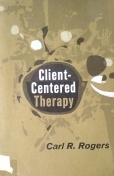What do you think?
Rate this book


572 pages, Paperback
First published January 1, 1951
In Client-Centered Therapy: Its Current Practice, Implications and Theory, Carl R. Rogers, Elaine Dorfman, Thomas Gordan, and Nicholas Hobbs, present a synthesis of the basic philosophy of nondirectional counseling. This book exposes the meaning through which personal counseling is achieved through a subtle process of self-realization.
Through the integration of commentary on documented therapeutic sessions, the perspective of Dr. Roger’s counseling procedures are subjected to both experimental and scientific analysis. The unfolding of the nondirective attitude contributes to every field of therapy from play to group considerations.
This text expresses the deeply held belief that what is genuine and has real meaning cannot sometimes be expressed in words. Nondirective counseling is thought of as a process and experience in a dynamic relationship.
More importantly, Dr. Rogers has endeavored to bring the realities of the counseling session – the anxiety, the despair, the hope, and the satisfaction – into the text. Moreover, great consideration is given to the uniqueness of the relationship between client and therapist, culminating in the personal experiences of both.
This review could go on for well over twenty pages if I was to cover the most important concepts developed in this book. Therefore, I will stand by my rating and end with two quotes I found to be valuable from the reading.
First,
“…[C]lient-centered therapy, with the intense focusing upon self which it involves, has as its end result, not more self-consciousness, but less. One might say that there is less self-consciousness and more self…That the self functions smoothly in experience, rather than being an object of introspection. Or as one client states in a follow-up interview one year after the conclusion of therapy: ‘I’m not self-conscious like I used to be…I don’t concentrate on being myself. I just am’” (129).
Second, the VIIth proposition from the chapter “A Theory of Personality and Behavior”,
“The best vantage point for understanding behavior is from the internal frame of reference of the individual himself” (494).
If you are so inclined to “really” read the book (sorry for my transference in this comment, it just appears that some of the reviewers failed to read the book, or grasp its concepts), I would highly suggest that you take your time and understand the last chapter, “A Theory of Personality and Behavior,” as the culmination, or “proof” if you will, about the fundamental soundness of the client-centered approach to counseling.
Happy Reading!